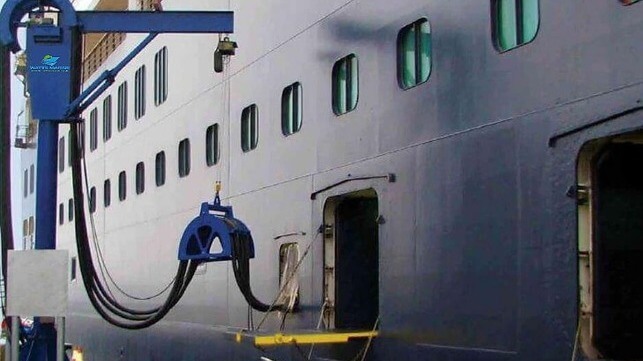North America's Cruise Ports Advance Their Shore Power Ambitions

For the cruise line and marine industry, shore power systems dramatically reduce the environmental impact of cruise ships and vessels docked at ports by allowing them to plug into local electrical power instead of running diesel engines, which create significant emissions.
Today, shoreside electricity connectivity is considered one of the fundamental building blocks in the marine industry’s goal to decarbonize global shipping and address climate change. Cruise Lines International Association’s (CLIA) 2022 Global Cruise Industry Environmental Technologies and Practices Report shows the industry’s progress towards achieving the vision of net-zero carbon cruising globally by 2050, including transitioning to shore power where available by 2035.
With lofty decarbonization targets set, the question now becomes how the industry will achieve them. Cruise lines are already upfitting their ships to connect to shore power, but ports must also determine the mechanics of installing and managing shoreside systems. There can be many challenges specific to each port, such as utility infrastructure availability, geography, and site conditions. Sufficient funding is also required, often through grant opportunities, but ports must successfully navigate how to secure them.
Fortunately, cost-effective shore power systems are already available, as are consultants who can help evaluate site conditions and facilitate design. Although many port authorities believe they must get outside consultants involved in these projects, they do not. Some providers with specific expertise and experience in shore power projects can assist in virtually all aspects of implementation including regulatory advising, grant funding, design, build, and installation as well as ongoing operation, reporting, and maintenance.
Rising Demand
Although the pandemic disrupted the cruise ship industry, the industry is recovering. Demand remains strong, with 84 percent of cruisers saying that they plan to cruise again soon—exceeding pre-pandemic levels. In addition, 69 percent of non-cruisers say they are open to cruising, an increase of 9 percent since November 2021, according to cruising.org.
In response to the recovery and demand for greater sustainability to address climate change, cruise lines are now making significant investments to connect to shoreside electricity. According to CLIA, 40% of global capacity (up 20% year over year) are fitted to operate on shore-side electricity in the 29 ports worldwide (less than 2% of the world’s ports) where that capability is provided in at least one berth in the port.
In addition, 98% of new build capacity on order book (between now and 2028) is either committed to be fitted with shore-side electricity systems or will be configured to add shore-side power in the future.
To facilitate the increasing demand for shore-side electricity systems, the industry is turning to experienced suppliers of the technology. One expert manufacturer and integrator of the technology is Kingston, WA-based Watts Marine, which currently has installed their Shore Power System at ports in Seattle, WA, San Diego, CA, San Francisco, CA, Halifax, NS, Vancouver BC, Brooklyn, NY and Long Beach, CA. The company delivers shore power systems to large marine vessels such as cruise ships, tugs, and ferries, and currently operates 10 of the 13 systems in North America. Today, approximately 500 ships a year connect to the company’s SSE equipment.
“We work with ports, cruise, and freight lines at the start of the process on feasibility analyses, emissions reductions estimates, and negotiations with stakeholders. To streamline permitting, we coordinate with utilities and develop specifications based on our designs, cutting engineering costs to a minimum,” says Mike Watts, president, and co-founder of Watts Marine.
The company’s shore power system consists of proprietary equipment developed specifically to serve the cruise ship industry. This includes equipment for dual-voltage electrical service, custom-developed electrical cable handling, and unique electronic monitoring and control. The company also handles ongoing operation and maintenance of the system. Once the ship is docked, Watts' operators deliver the shore power cables to the ship’s crew using a cable positioning device.
The shore-side operator then selects the ship to be connected from the database in the automation system, which determines the proper operating parameters. Watts Marine’s custom software also allows its control center in Kingston, WA to oversee every connection.
Recently, the company secured the contract for a new shore power system at the Bell Street Pier Cruise Terminal at Pier 66 on Seattle's downtown waterfront. When completed, this will be the first port with three shore power systems for cruise ships. The project is supported in part by nearly $3 million in grant funding from the U.S. Environmental Protection Agency Diesel Emissions Reduction Act, the state of Washington Department of Ecology, and the TransAlta Centralia Coal Transition Board.
Instead of digging up waterfront streets to lay power lines, the port is running an underwater cable along the seafloor of Elliott Bay from the power source at Terminal 46 to the cruise ship plug at Pier 66. The $17 million project is cost effective compared to running power below waterfront streets.
As the cruise line and marine industry pursue decarbonization initiatives to increase sustainability and address climate change, connecting ships to shore power in port will become a global, best practice standard. Port authorities and cruise lines that partner with expert suppliers in the technology will achieve their project goals in a streamlined, cost-effective manner. The collaboration will help to make the industry’s declared goal of reaching net-zero carbon cruising globally by 2050 a reality.
The opinions expressed herein are the author's and not necessarily those of The Maritime Executive.
